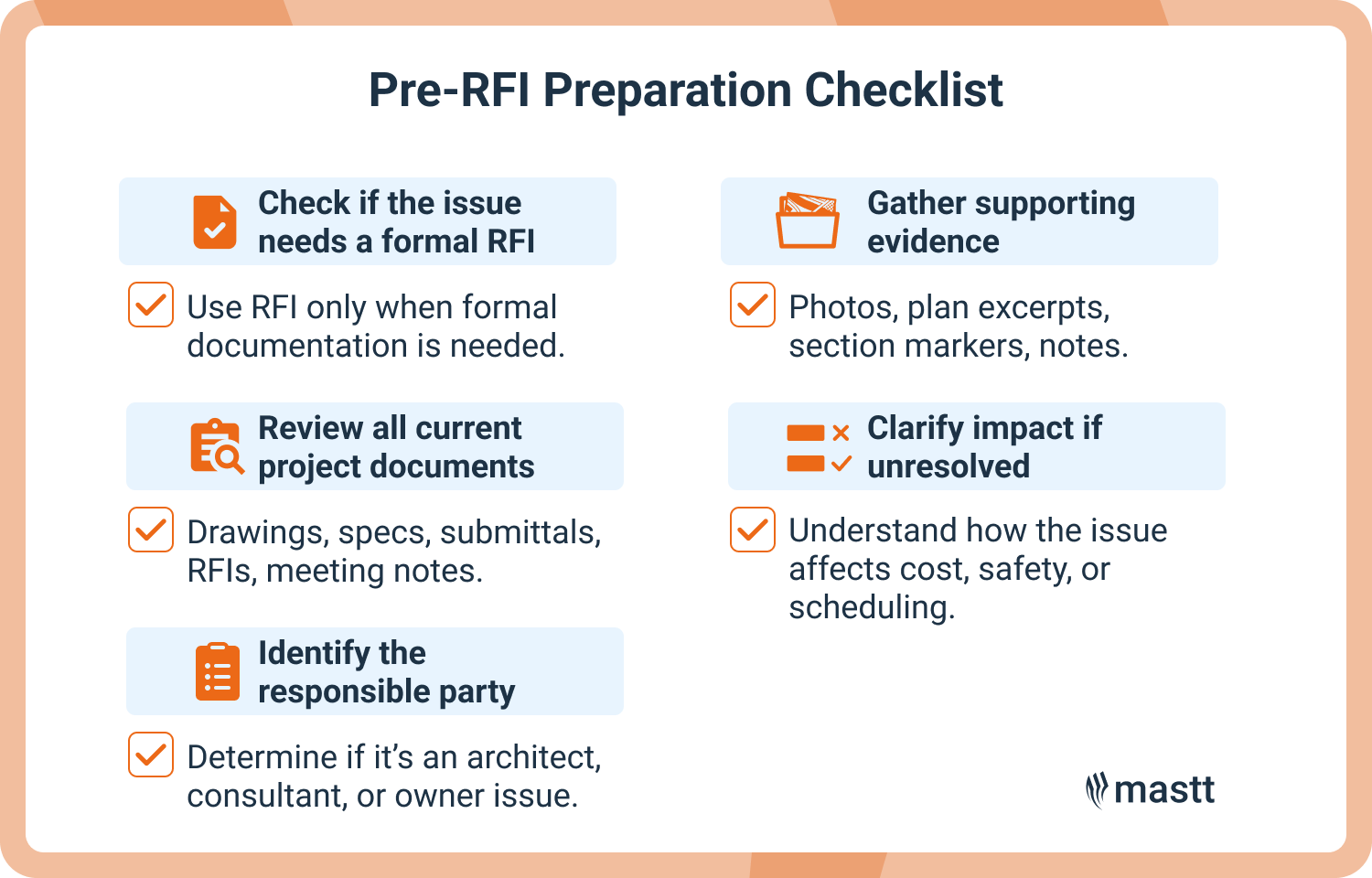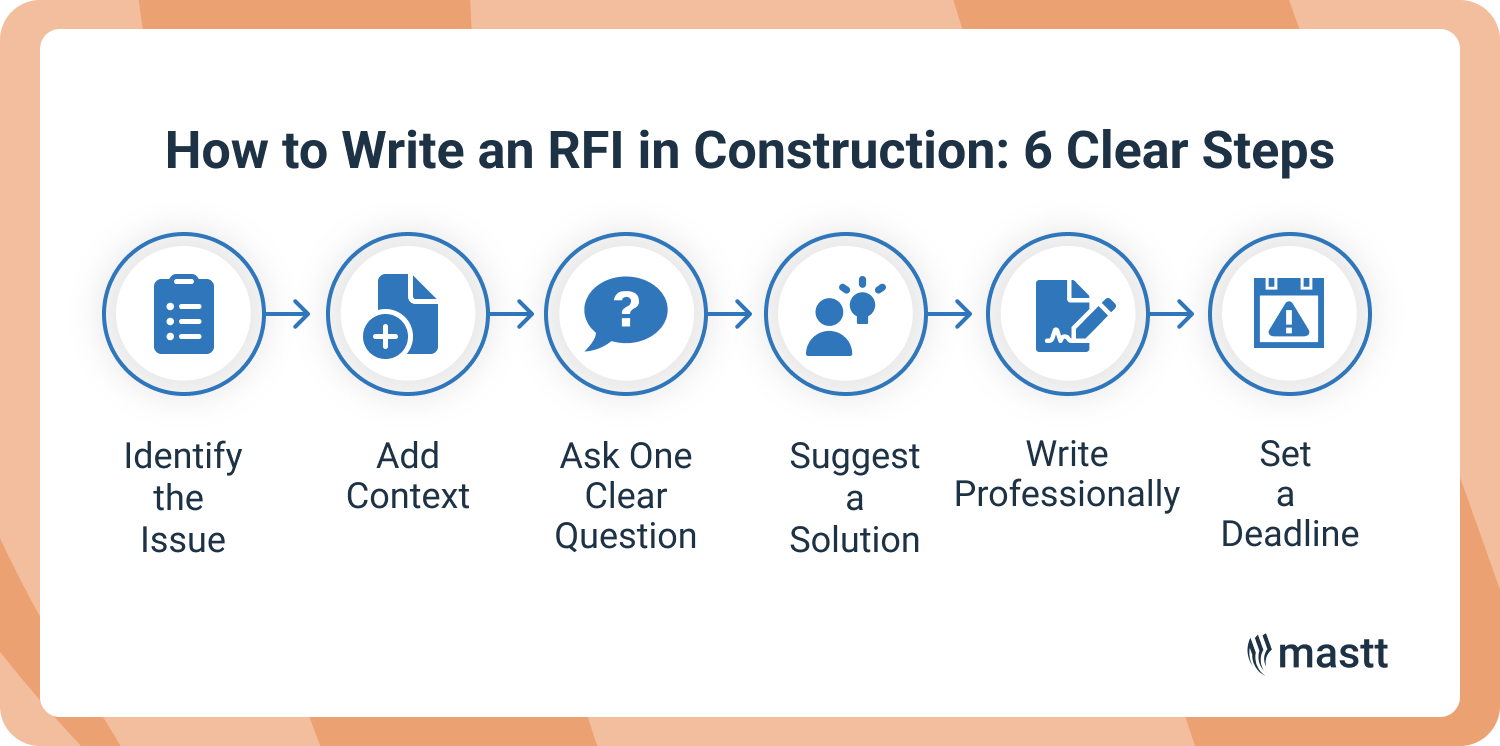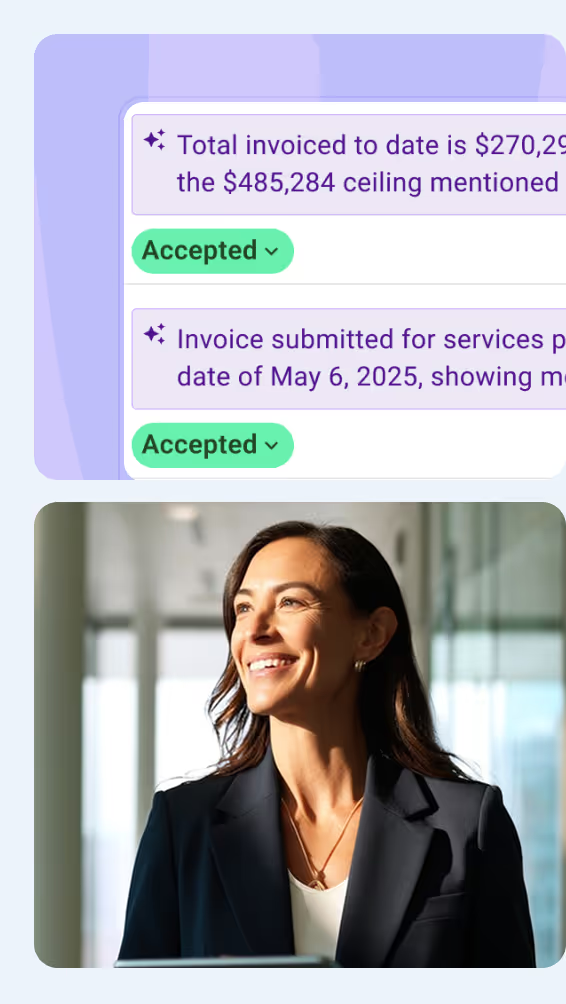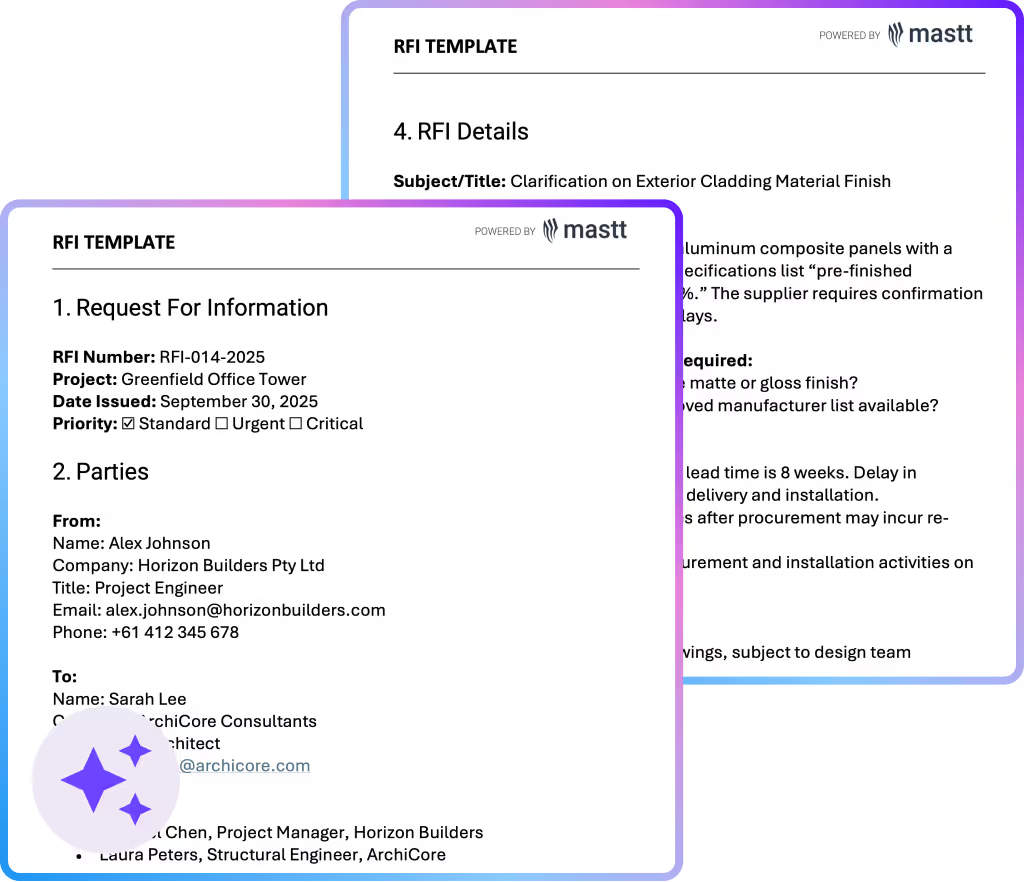Writing clear, effective RFIs (Requests for Information) is an essential skill for construction professionals because it resolves design gaps, clarifies project specifications, and prevents costly delays.
In this article, you’ll learn what to prepare and how to write an RFI that gets fast, accurate responses. You’ll also learn the most common RFI writing mistakes to avoid for clearer communication and better construction project management.
What to Prepare Before Writing an RFI
Before you start writing an RFI in construction, confirm that the issue truly requires a formal request. This helps you decide whether an RFI submission is necessary and ensures you're fully prepared to draft one.
Here’s what you need to prepare before writing an RFI:
- Confirm the issue can’t be resolved informally: Quick questions can often be resolved through a site meeting or phone call. Use an RFI only when formal documentation is needed for records, risks, or scope impact.
- Review all existing construction documents: Double-check construction drawings, specifications, RFIs, submittals, meeting notes, and any recent changes. Ensure the answer doesn’t already exist.
- Identify who owns the issue: Determine if the question falls under the architect, structural engineer, subcontractor, services consultant, or project owner.
- Gather evidence and references: Collect relevant information like plan details, section markers, site photos, and notes. You’ll need this detailed information handy when it’s time to draft.
- Clarify the impact if unresolved: Know how the issue affects project progress, cost, or safety. This helps set the priority level during the RFI review process.
A well‑researched, clearly directed RFI improves turnaround time and prevents project delays.

6 Steps to Writing Effective Construction RFIs
Writing an effective RFI starts with a clear RFI description and just enough detail to avoid confusion. The goal is to help the reviewer understand the issue quickly and respond with the right answer.
These six steps will help you write construction RFIs that are easy to review and act upon:
Step 1: Identify the Issue Clearly
State exactly what’s missing, conflicting, or unclear. Reference the specific construction document, drawing, project specifications, or detail that relates to the problem.
Always double-check contract documents first. Avoid raising RFIs for answers already in the project documentation.
Step 2: Provide Context and Supporting Documents
Help the reviewer understand what you’ve already checked. Mention drawing numbers, detail references, or site conditions that frame the issue.
Attach photos or marked-up documents if they add clarity. If you’re using standardized forms like AIA contract documents, reference specific sections clearly.
Step 3: Ask a Specific, Focused Question
Keep the RFI form tight. Ask one question per submission and make it easy to answer.
If the issue has multiple parts, split it into separate RFIs. That avoids confusion and speeds the resolution of each RFI document.
🤝 Expert Tip: Show you’re working with the project team, not against them. Frame the RFI as a request for help resolving a shared issue.
Step 4: Propose a Potential Solution
If your contract allows it, suggest a potential solution. This shows initiative and often leads to faster decisions.
Example: “Please confirm if substituting [Product A] for [Product B] is acceptable due to availability issues.”
Step 5: Write in Clear, Professional Language
An RFI is a formal part of the construction communication process and becomes part of the project record. Write as if someone will read it years later to understand project details clearly.
Avoid vague terms. Keep your wording direct, respectful, and specific.
📞 Expert Tip: A quick call with the designer or vendor before submitting can surface concerns you didn’t think to include. That short conversation often leads to a better-written RFI.
Step 6: Set Clear Expectations
Include a realistic response deadline based on your project plan. Explain how the issue affects sequencing, site access, or critical path activities. When reviewers understand the impact, they’re more likely to prioritize the RFI response.
Using a consistent RFI template also helps streamline the writing process and ensures nothing important is missed. A clear, standardized template keeps your RFI submissions aligned with best practices and your construction project standards.

RFI Writing Mistakes and How to Avoid Them
Common issues in RFI management include asking multiple questions in one RFI, providing too little context, and using unprofessional formatting. These are just a few. Below are the key mistakes to avoid and best practices to follow.
1. Asking Multiple Questions in One RFI: Bundling unrelated questions into a single RFI creates confusion. Reviewers may respond to one part and ignore the rest.
✅ Solution: Submit separate RFIs for unrelated issues. Break them up by trade, location, or design discipline. Reference related RFIs if needed.
2. Providing Too Little Context: Vague RFI questions like “Please clarify details” are nearly impossible to answer. Reviewers need more specific information to assist you effectively.
✅ Solution: Include drawing numbers, spec sections, and site conditions. Clarify what you’ve already checked. Context helps reviewers deliver targeted answers.
3. Using Unprofessional Language or Format: Informal tone, poor grammar, or sloppy layout can weaken your RFI request. It looks rushed and may not be taken seriously.
✅ Solution: Write clearly and professionally. Use proper formatting, full sentences, and an organized structure. Treat each RFI like an important business document.
4. Missing Critical Deadlines: RFIs submitted late or without adequate lead time disrupt schedules. Rushed RFI submissions often get delayed or overlooked entirely.
✅ Solution: Plan your RFIs in advance. Set realistic deadlines and explain how timing impacts your scope of work. Follow up professionally if needed.
Effective RFIs save time on site by reducing back-and-forth and limiting the chance of incorrect work. They create clear, auditable documentation supporting better decisions and reducing disputes later in the construction project.
Reduce RFIs by Learning From Past Issues
Tracking RFI statuses and patterns helps improve future construction project outcomes. Repeated questions often point to deeper design or coordination problems.
Reviewing your RFI history regularly with your project manager or contractor can help identify root causes and fix recurring issues. Use an RFI register to log submissions and track statuses. This small step leads to better documentation and fewer RFIs on future projects.













